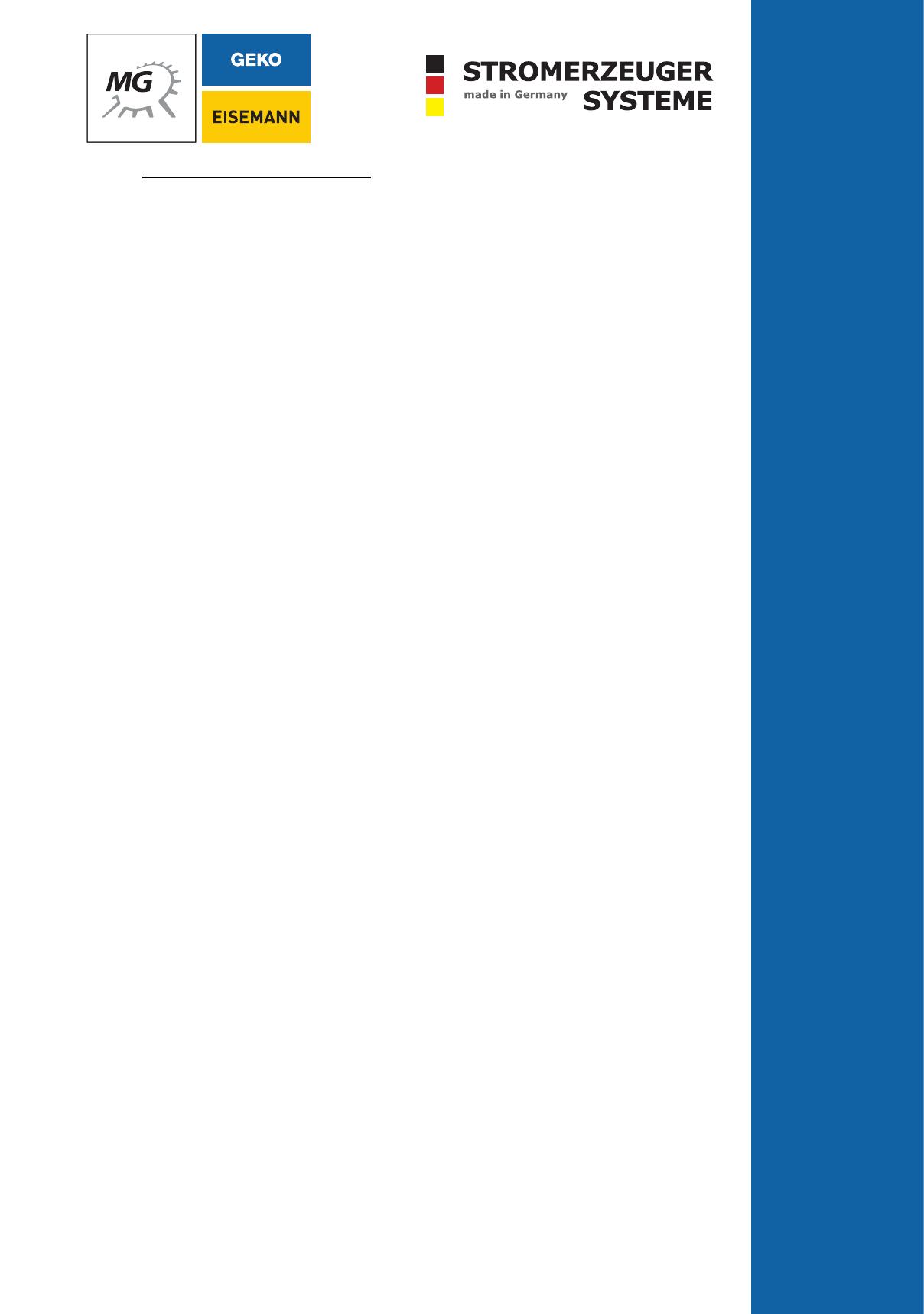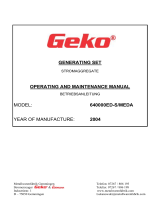
Safety instructions
Page 3
1. SAFETY INSTRUCTIONS
1.1. General safety instructions
This information must be supplemented by statutory regulations and possibly applicable regional
regulations that have been adopted for reasons of safety! These can be plant safety or service regula-
tions of the respective institution.
I The power generator is built in accordance with the state-of-the-art and the acknowledged
safety-engineering rules. Nevertheless, during use hazards for the life and limb of the user or
third parties, respectively impairments to the power generator or other material assets could
develop.
I Use the generator for its intended purpose, safety conscious and taking hazards into conside-
ration and observing these operating instructions and the operating instructions of the engine
manufacturer!
I Intended use includes compliance with all inspection and maintenance instructions in these
instructions and the instructions of the engine manufacturer. For reasons of linguistic simpli-
cation, reference is made later only to <the operating instructions>!
I Always keep the operating instructions in a safe place easily accessible at the place of use of the
power generator! Pass on all operating instructions to the buyer when the power generator is
sold!
I In addition to the operating instructions, comply with all generally valid, legal and other bin-
ding regulations on accident prevention and environmental protection. Such obligations may
also, for example, involve the handling of hazardous substances or the provision/use of perso-
nal protective equipment or road-safety rules!
I Where appropriate, supplement the operating instructions with internal directives. These in-
clude supervisory and reporting requirements to take into account operational characteristics
concerning the work organization, workows, and deployed sta and responsible persons.
I Only use the power generator in technically perfect condition!
I Immediately remedy all faults that could impair safety.
I Comply with all safety instructions and hazard warnings attached to the power generator!
I Keep all safety instructions and hazard warnings on the power generator in a legible condition!
I If any safety-relevant modications are made on the power generator or to the operational cha-
racteristics, immediately shut down the power generator. Eliminate the fault immediately!
I Do not make any modications/changes or any attachments/alterations on/to the power ge-
nerator without the prior, written consent of the manufacturer! This applies in particular to the
installation and adjustment of safeguards and safety valves, as well as to welding on load-bea-
ring parts!
I Spare parts must meet the technical specications dened by the manufacturer. This is guaran-
teed by the use of genuine spare parts!
I Do not make program changes on the software of the control system!





















